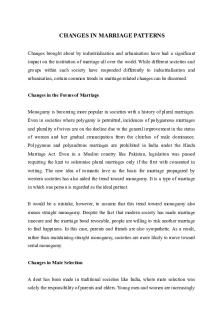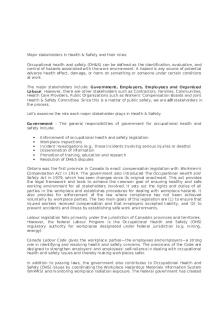Vegetarian Dietary Patterns and Mortality in Adventist Health 2013 PDF

| Title | Vegetarian Dietary Patterns and Mortality in Adventist Health 2013 |
|---|---|
| Author | Agustina Gamoneda |
| Course | Nutrición |
| Institution | Universidad Nacional de Lanús |
| Pages | 19 |
| File Size | 317.8 KB |
| File Type | |
| Total Downloads | 39 |
| Total Views | 134 |
Summary
Vegetarianos...
Description
NIH Public Access . Author manuscript; available in PMC 2014 October 09.
NIH-PA Author Manuscript
Published in final edited form as: . 2013 July 8; 173(13): 1230–1238. doi:10.1001/jamainternmed.2013.6473.
Vegetarian Dietary Patterns and Mortality in Adventist Health Study 2 Dr. Michael J. Orlich, MD, Dr. Pramil N Singh, DrPH, Dr. Joan Sabaté, MD, DrPH, Dr. Karen Jaceldo-Siegl, DrPH, Ms. Jing Fan, MS, Dr. Synnove Knutsen, MD, PhD, Dr. W. Lawrence Beeson, DrPH, and Dr. Gary E. Fraser, MBchB, PhD Schools of Public Health (Drs Orlich, Singh, Sabaté, Jaceldo-Siegl, Knutsen, Beeson, and Fraser, and Ms Fan) and Medicine (Drs Sabaté, Jaceldo-Siegl, Knutsen, and Fraser), Loma Linda University, Loma Linda, California
Abstract NIH-PA Author Manuscript
Importance—Some evidence suggests vegetarian dietary patterns may be associated with reduced mortality, but the relationship is not well established. Objective—To evaluate the association between vegetarian dietary patterns and mortality. Design—Prospective cohort study; mortality analysis by Cox proportional hazards regression, controlling for important demographic and lifestyle confounders. Setting—Adventist Health Study 2 (AHS-2), a large North American cohort. Participants—A total of 96 469 Seventh-day Adventist men and women recruited between 2002 and 2007, from which an analytic sample of 73 308 participants remained after exclusions. Exposures—Diet was assessed at baseline by a quantitative food frequency questionnaire and categorized into 5 dietary patterns: nonvegetarian, semi-vegetarian, pesco-vegetarian, lacto-ovo– vegetarian, and vegan.
NIH-PA Author Manuscript
© 2013 American Medical Association. All rights reserved. Correspondence: Michael J. Orlich, MD, Adventist Health Studies, School of Public Health, 24951 N Circle Dr, NH 2031, Loma Linda University, Loma Linda, CA 92350 ([email protected]). Dr Orlich reports receiving a small honorarium from the Northern California Conference of Seventh-day Adventists to partially defray travel expenses for a speaking engagement at which he gave an overview and update of Adventist Health Studies research and a small honorarium from the Southern California Conference of Seventh-day Adventists for a speaking engagement at which he lectured on lifestyle approaches for chronic disease prevention. The views expressed in this article are those of the authors and do not necessarily represent the views of the NCI or NIFA. The ideas and opinions expressed herein are those of the authors, and endorsement by the NCI, NIFA, or their contractors or subcontractors is not intended nor should it be inferred. These findings were presented in a brief oral presentation at the Society for Epidemiologic Research annual meeting; June 28, 2012; Minneapolis, Minnesota. Drs Orlich and Fraser had full access to all the data in the study and take responsibility for the integrity of the data and the accuracy of the data analysis. Orlich, Jaceldo-Siegl, and Fraser. JaceldoSiegl, Knutsen, Beeson, and Fraser. Orlich, Singh, Sabaté, Fan, and Knutsen. Orlich, Singh, and Jaceldo-Siegl. Singh, Sabaté, Fan, Knutsen, Beeson, and Fraser. Orlich, Singh, Fan, Beeson, and Fraser. Fraser. Knutsen and Beeson. Jaceldo-Siegl and Fraser. Hanni Bennett, Research Associate, Adventist Health Studies, School of Public Health, Loma Linda University, provided invaluable administrative support for AHS-2.
Orlich et al.
Page 2
NIH-PA Author Manuscript
Main Outcome and Measure—The relationship between vegetarian dietary patterns and allcause and cause-specific mortality; deaths through 2009 were identified from the National Death Index. Results—There were 2570 deaths among 73 308 participants during a mean follow-up time of 5.79 years. The mortality rate was 6.05 (95% CI, 5.82–6.29) deaths per 1000 person-years. The adjusted hazard ratio (HR) for all-cause mortality in all vegetarians combined vs non-vegetarians was 0.88 (95% CI, 0.80–0.97). The adjusted HR for all-cause mortality in vegans was 0.85 (95% CI, 0.73–1.01); in lacto-ovo–vegetarians, 0.91 (95% CI, 0.82–1.00); in pesco-vegetarians, 0.81 (95% CI, 0.69–0.94); and in semi-vegetarians, 0.92 (95% CI, 0.75–1.13) compared with nonvegetarians. Significant associations with vegetarian diets were detected for cardiovascular mortality, noncardiovascular noncancer mortality, renal mortality, and endocrine mortality. Associations in men were larger and more often significant than were those in women. Conclusions and Relevance—Vegetarian diets are associated with lower all-cause mortality and with some reductions in cause-specific mortality. Results appeared to be more robust in males. These favorable associations should be considered carefully by those offering dietary guidance.
NIH-PA Author Manuscript
The possible relationship between diet and mortality remains an important area of investigation. Previous studies have identified dietary factors associated with mortality. Those found to correlate with reduced mortality include nuts,1–4 fruit,5,6 cereal fiber,2 polyunsaturated fatty acids (PUFAs),2 ω-3PUFAs,3 green salad,7 Mediterranean dietary patterns,8–11 “healthy” or “prudent” dietary patterns,10,12,13 plant-based diet scores,14 plantbased low-carbohydrate diets,15 and vegetarian diets.4,16,17 Associations with increased mortality have been found for a high glycemic load,2 meat,6,7 red meat,18,19 processed meat,18,19 eggs,7 potatoes,5 increased energy intake,20 and animal-based low-carbohydrate diets.15
NIH-PA Author Manuscript
Vegetarian dietary patterns may contain many of the above-listed foods and nutrients associated with reduced mortality while having reduced intakes of some foods associated with increased mortality. Vegetarian dietary patterns have been associated with reductions in risk for several chronic diseases, such as hypertension,21,22 metabolic syndrome,23 diabetes mellitus,24,25 and ischemic heart disease (IHD),17,26 which might be expected to result in lower mortality. Vegetarian diets represent common, real-world dietary patterns and are thus attractive targets for study. Previous studies of the relationship between vegetarian dietary patterns and mortality have yielded mixed results. In the first Adventist Health Study, a study of 34 198 California Seventh-day Adventists,27 vegetarian dietary patterns were associated with reduced allcause mortality and increased longevity.4,17 In contrast, the European Prospective Investigation into Cancer and Nutrition–Oxford (EPIC-Oxford) cohort study did not show an all-cause mortality advantage for British vegetarians (among 47 254 vegetarian and nonvegetarian participants),28 and pooled results have shown reductions only for IHD mortality.16
. Author manuscript; available in PMC 2014 October 09.
Orlich et al.
Page 3
NIH-PA Author Manuscript
Our objective, in light of the potential benefits of vegetarian diets and the existing uncertainty in the literature, was to evaluate the possible association of vegetarian dietary patterns with reduced mortality in a large American cohort including many vegetarians.
METHODS STUDY POPULATION Adventist Health Study 2 (AHS-2) is a cohort of 96 469 Seventh-day Adventist men and women recruited at churches in the United States and Canada between 2002 and 2007.29 Butler et al29 provided a detailed explanation of the cohort formation and characteristics. Written informed consent was obtained from all participants upon enrollment. The study was approved by the institutional review board of Loma Linda University.
NIH-PA Author Manuscript
Exclusions were applied in the following order: missing data for questionnaire return date, birth date, sex, or race (n=1702); age younger than 25 years (n=434); estimated energy intake (not including write-in items) less than 500 kcal/d or more than 4500 kcal/d; improbable response patterns (eg, identical responses to all questions on a page) or more than 69 missing values in dietary data (n=4961); non-US residents (n=4108); or history of a specific prior cancer diagnosis (except nonmelanoma skin cancers) or of cardiovascular disease (CVD) (coronary bypass, angioplasty/stent, carotid artery surgery, myocardial infarction, or stroke; or angina pectoris or congestive heart failure treated in the past 12 months) (n=11 956). After exclusions, there remained an analytic sample of 73 308. MORTALITY DATA Mortality data through December 31, 2009, were obtained from the National Death Index.
NIH-PA Author Manuscript
, ( ) codes for the underlying cause of death were used for causal classification. Unnatural causes of death ( letters U, V, W, X, and Y) were considered as censoring events. Deaths associated with IHD were identified as I20-25; CVD deaths, as those starting with the letter I; and cancer deaths, as those starting with the letter C. Noncardiovascular, noncancer deaths were identified as all natural deaths not classified as CVD or cancer deaths. Infectious disease deaths were identified as those starting with the letters A or B; neurologic deaths, the letter G; respiratory deaths, the letter J; renal deaths, the letter N; and endocrine deaths, the letter E. Stroke deaths were identified using the code I60-69; diabetes mellitus deaths, E10-14; and renal failure deaths, N17-19. DIETARY DATA Usual dietary intake during the previous year was assessed at baseline by a self-administered quantitative food frequency questionnaire of more than 200 food items. Dietary patterns were determined according to the reported intake of foods of animal origin. Thus, vegans consumed eggs/dairy, fish, and all other meats less than 1 time/mo; lacto-ovo–vegetarians consumed eggs/dairy 1 time/mo or more but fish and all other meats less than 1 time/mo; pesco-vegetarians consumed fish 1 time/mo or more but all other meats less than 1 time/mo; semi-vegetarians consumed nonfish meats 1 time/mo or more and all meats combined (fish included) 1 time/mo or more but no more than 1 time/wk; and last, nonvegetarians
. Author manuscript; available in PMC 2014 October 09.
Orlich et al.
Page 4
NIH-PA Author Manuscript
consumed nonfish meats 1 time/mo or more and all meats combined (fish included) more than 1 time/wk. For some analyses, the 4 vegetarian categories (vegan, lacto-ovo– vegetarian, pesco-vegetarian, and semi-vegetarian) were combined as “vegetarian.” The food frequency questionnaire was previously validated against six 24-hour dietary recalls for intake of nutrients30 and selected foods/food groups.31 Validity correlations for red meat, poultry, fish, dairy, and eggs were 0.76, 0.76, 0.53, 0.86, and 0.64, respectively, in whites and 0.72, 0.77, 0.57, 0.82, and 0.52, respectively, in blacks.31 Mean duration of adherence to dietary patterns was calculated for respondents to a follow-up questionnaire in which participants were asked to characterize their consumption of meat and dairy products at that time and in previous decades. COVARIATES
NIH-PA Author Manuscript
Other variables, all measured at baseline, were as follows (Table 1 footnotes for category specification): sex (dichotomous), race (dichotomous), geographic region (6 levels), personal income (4 levels), educational level (4 levels), marital status (dichotomous), smoking (8 levels), alcohol use (5 levels), exercise (ie, “vigorous activities, such as brisk walking, jogging, bicycling, etc, long enough or with enough intensity to work up a sweat, get your heart thumping, or get out of breath”) (5 levels), sleep (3 levels), menopausal status of women (dichotomous), hormone therapy in postmenopausal women (dichotomous), dietary energy (7 levels:...
Similar Free PDFs

Vegetarian
- 8 Pages

Vegetarian-Diet.pdf
- 23 Pages

Changes IN Marriage Patterns
- 4 Pages

Patterns and Sequences
- 2 Pages

DIETARY HISTORY
- 10 Pages

Design Patterns in Java Tutorial
- 168 Pages
Popular Institutions
- Tinajero National High School - Annex
- Politeknik Caltex Riau
- Yokohama City University
- SGT University
- University of Al-Qadisiyah
- Divine Word College of Vigan
- Techniek College Rotterdam
- Universidade de Santiago
- Universiti Teknologi MARA Cawangan Johor Kampus Pasir Gudang
- Poltekkes Kemenkes Yogyakarta
- Baguio City National High School
- Colegio san marcos
- preparatoria uno
- Centro de Bachillerato Tecnológico Industrial y de Servicios No. 107
- Dalian Maritime University
- Quang Trung Secondary School
- Colegio Tecnológico en Informática
- Corporación Regional de Educación Superior
- Grupo CEDVA
- Dar Al Uloom University
- Centro de Estudios Preuniversitarios de la Universidad Nacional de Ingeniería
- 上智大学
- Aakash International School, Nuna Majara
- San Felipe Neri Catholic School
- Kang Chiao International School - New Taipei City
- Misamis Occidental National High School
- Institución Educativa Escuela Normal Juan Ladrilleros
- Kolehiyo ng Pantukan
- Batanes State College
- Instituto Continental
- Sekolah Menengah Kejuruan Kesehatan Kaltara (Tarakan)
- Colegio de La Inmaculada Concepcion - Cebu









